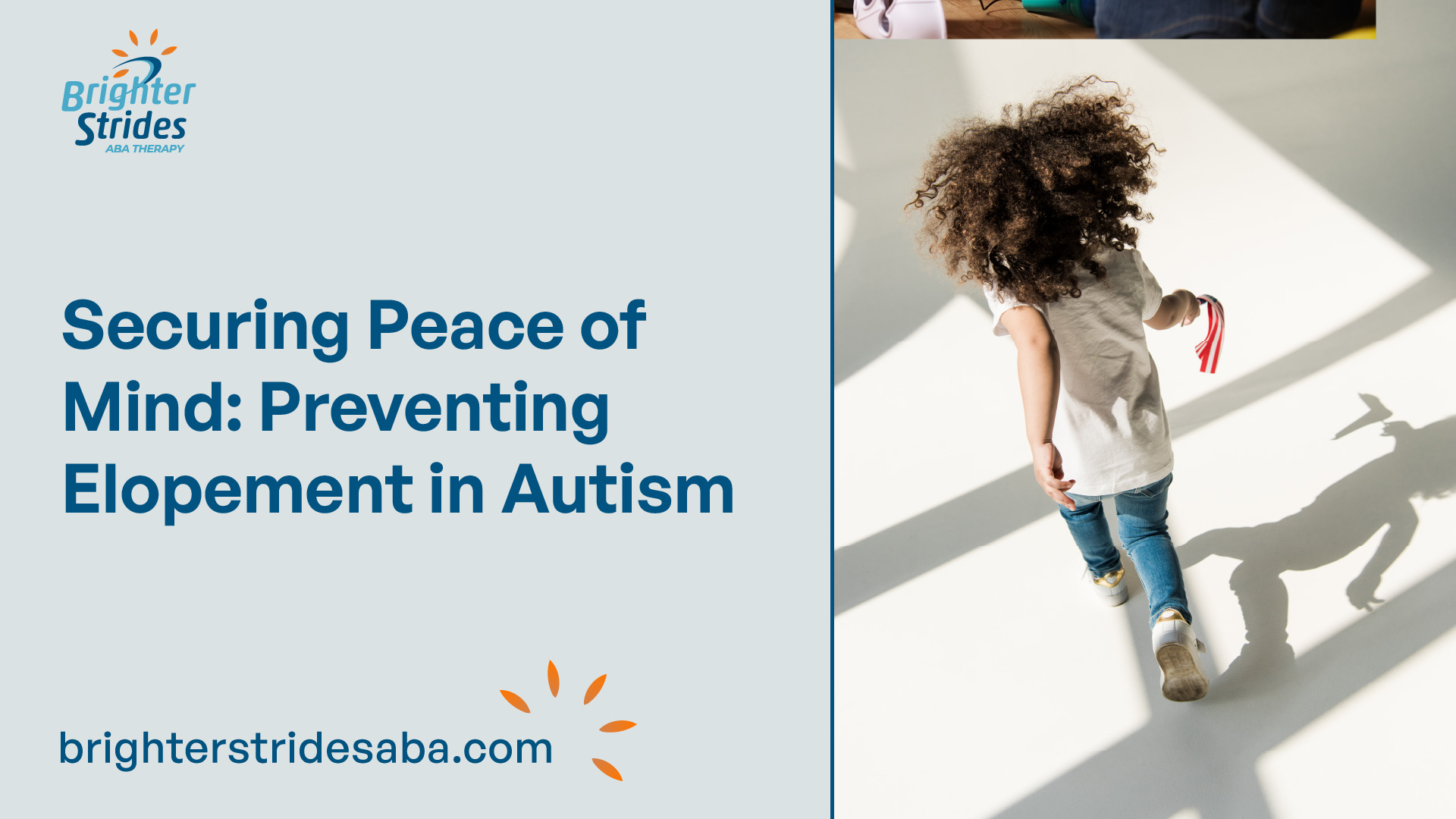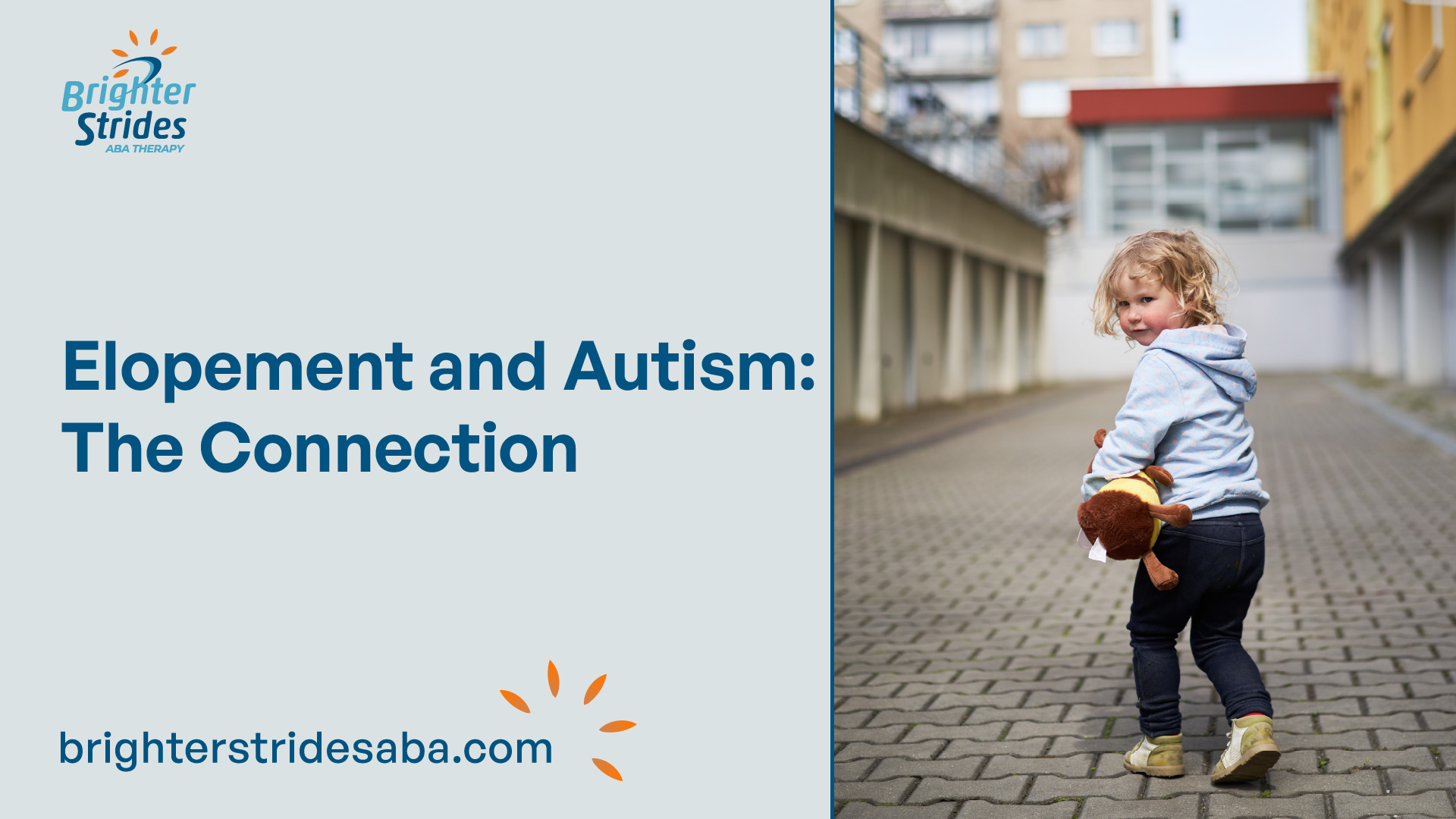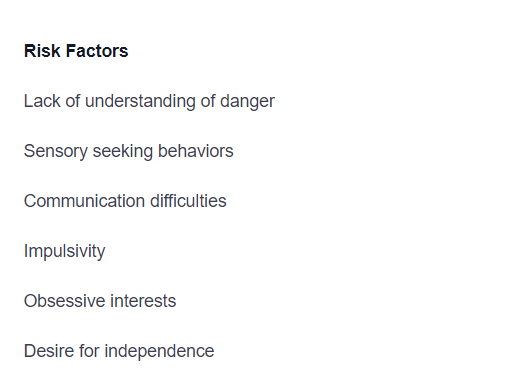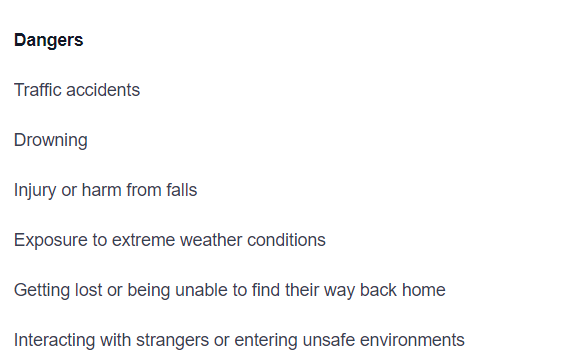Understanding Elopement in Autism
Elopement is a significant concern in individuals with autism, and understanding this behavior is crucial for effective prevention and intervention strategies. Let’s explore what elopement is and the connection between elopement and autism.

What is Elopement?
Elopement refers to the act of leaving a designated area without the knowledge or permission of caregivers or authorities. In the context of autism, elopement involves individuals with autism wandering away from safe environments, such as homes, schools, or other supervised settings. This behavior can pose serious risks to the safety and well-being of those affected.
Elopement and Autism: The Connection
Elopement is more prevalent in individuals with autism compared to the general population. Research suggests that approximately 50% of children with autism engage in elopement behavior at some point. The reasons behind elopement in autism are multifaceted and can vary from individual to individual.
Several factors contribute to the increased risk of elopement in individuals with autism. These may include challenges with communication, social interaction difficulties, sensory sensitivities, and a tendency towards repetitive or perseverative behaviors. Elopement can serve different purposes for individuals with autism, such as seeking sensory stimulation, escaping from overwhelming situations, pursuing special interests, or experiencing a change of environment.
Understanding the connection between elopement and autism is essential for developing preventive strategies and effective interventions. By addressing the underlying factors that contribute to elopement, individuals with autism can be better supported and their safety can be prioritized.
Now that we have gained an understanding of what elopement is and its association with autism, let’s explore the risk factors, potential dangers, and preventive strategies in detail.

Risk Factors and Potential Dangers
Understanding the risk factors associated with elopement in individuals with autism is essential for prevention and ensuring their safety. Elopement refers to the act of leaving a designated area without supervision, often resulting in potentially dangerous situations. Let’s explore the common risk factors for elopement and the potential dangers it poses.
Common Risk Factors for Elopement
Elopement can occur in individuals across the autism spectrum, but certain factors may increase the likelihood of elopement incidents. Some common risk factors include:

It’s important to recognize that these risk factors can vary from person to person. Identifying and addressing these factors can help develop effective preventive strategies.
Dangers Associated with Elopement
Elopement poses significant dangers and safety risks for individuals with autism. Some potential dangers associated with elopement include:

These dangers highlight the critical importance of implementing preventive measures and creating a safe environment for individuals with autism who may be prone to elopement.
By understanding the common risk factors and potential dangers associated with elopement in individuals with autism, we can take proactive steps to prevent elopement incidents and ensure their safety. The next section will delve into preventive strategies that can be implemented to minimize the risk of elopement and promote a secure environment.
Preventive Strategies
When it comes to preventing elopement in individuals with autism, implementing preventive strategies is essential for ensuring their safety and well-being. These strategies focus on environmental modifications, sensory considerations, and the use of visual supports and communication techniques.
Environmental Modifications
Making specific modifications to the environment can help reduce the risk of elopement in individuals with autism. These modifications aim to create a safe and secure space that minimizes the opportunities for elopement. Some key strategies include:
- Secure the Physical Environment: Install childproof locks on doors and windows, use fences or gates to enclose outdoor areas, and ensure that potential escape routes are properly secured.
- Remove or Minimize Potential Triggers: Identify and minimize environmental triggers that may prompt elopement. This could include reducing noise levels, eliminating distractions, and creating a calm and structured environment.
- Create Designated Safe Areas: Designate specific areas within the home or school where the individual can safely navigate without the risk of elopement. These areas should be secure and free from potential hazards.
Sensory Considerations
Sensory considerations play a crucial role in preventing elopement. Individuals with autism often have unique sensory needs, and addressing these needs can help reduce the likelihood of elopement. Key strategies include:
- Sensory Regulation: Provide opportunities for sensory input and regulation through activities such as deep pressure or proprioceptive exercises. This can help individuals feel more grounded and less likely to seek sensory stimulation through elopement.
- Sensory Breaks: Create designated sensory break areas where individuals can retreat to when they feel overwhelmed or overstimulated. These areas should be equipped with sensory tools and materials that cater to their specific sensory needs.
- Sensory-friendly Environments: Create an environment that is sensory-friendly by considering lighting, noise levels, and textures. Minimizing sensory overload can help individuals feel more comfortable and less inclined to elope.
Visual Supports and Communication
Visual supports and effective communication techniques are vital in preventing elopement and promoting understanding and safety. These strategies can help individuals with autism communicate their needs and understand expectations. Key strategies include:
- Visual Schedules: Use visual schedules to provide a clear and structured outline of daily activities. This can help individuals understand what is happening and reduce anxiety or confusion that may lead to elopement.
- Social Stories: Utilize social stories to explain social situations and appropriate behaviors. Social stories can be particularly effective in teaching individuals about safety rules and the potential dangers associated with elopement.
- Communication Tools: Implement augmentative and alternative communication (AAC) systems, such as picture exchange communication systems (PECS) or electronic communication devices, to facilitate effective communication and reduce frustration that may lead to elopement.
By implementing these preventive strategies, individuals with autism and their caregivers can work towards reducing the risk of elopement and creating a safe and supportive environment. It is important to tailor these strategies to meet the specific needs of each individual, working in collaboration with therapists and caregivers to ensure their effectiveness.
Effective Intervention Approaches
When it comes to addressing elopement in individuals with autism, there are various intervention approaches that have been found to be effective. These approaches aim to prevent elopement incidents and ensure the safety of individuals with autism. Let’s explore three of these intervention approaches: Applied Behavior Analysis (ABA), Social Stories and Visual Scripts, and Tracking Devices and GPS Technology.
Applied Behavior Analysis (ABA)
Applied Behavior Analysis (ABA) is a widely recognized and evidence-based approach used to address challenging behaviors, including elopement, in individuals with autism. ABA focuses on understanding the function of the behavior and implementing strategies to promote positive behavior change.
In the case of elopement, ABA professionals conduct functional behavior assessments to determine the underlying reasons for the behavior. Based on the assessment, individualized intervention plans are developed. These plans typically include strategies such as teaching alternative behaviors, implementing visual supports, and utilizing reinforcement techniques to increase appropriate behaviors and decrease elopement incidents.
ABA interventions are often implemented in various settings, including home, school, and community, to ensure consistency and generalization of skills. The goal is to provide individuals with the necessary skills and strategies to stay safe and minimize the occurrence of elopement.
Social Stories and Visual Scripts
Social Stories and Visual Scripts are visual tools commonly used to teach individuals with autism about appropriate behaviors and social expectations. These tools can also be effective in addressing elopement by providing individuals with a better understanding of the potential dangers and appropriate responses in various situations.
Social Stories are personalized narratives that describe a specific situation, event, or behavior. They use simple language, visual supports, and clear explanations to help individuals with autism understand and navigate social situations. For elopement, Social Stories can be created to explain why it’s important to stay with a caregiver or the consequences of leaving a safe environment.
Visual Scripts, on the other hand, are visual step-by-step guides that outline the expected sequence of actions in a specific situation. These scripts can be used to teach individuals with autism how to ask for help, follow specific safety routines, or stay within designated boundaries.
By incorporating Social Stories and Visual Scripts into daily routines and teaching moments, individuals with autism can develop a better understanding of safety expectations and make informed choices when it comes to elopement prevention.
Tracking Devices and GPS Technology
In certain situations, tracking devices and GPS technology can be considered as part of a comprehensive elopement prevention plan. These devices can provide an added layer of security by allowing caregivers to locate individuals with autism in case of elopement.
Tracking devices can come in various forms, such as wristbands, wearable GPS trackers, or small devices that can be attached to personal items. These devices utilize GPS technology to provide real-time location information, allowing caregivers to quickly locate and retrieve individuals who have eloped.
It’s important to note that tracking devices should not be solely relied upon for elopement prevention. They should be used in combination with other preventive strategies and under the guidance of professionals who can assess the appropriateness of their use for each individual.
By implementing effective intervention approaches such as ABA, Social Stories and Visual Scripts, and considering the use of tracking devices and GPS technology, individuals with autism can be supported in managing elopement behaviors and ensuring their safety in various environments.
Building a Supportive Network
When it comes to preventing elopement in individuals with autism, building a supportive network plays a crucial role. This network consists of therapists, caregivers, family members, and community resources that collaborate to ensure the safety and well-being of the individual. Here are some key aspects of building a supportive network:
Collaboration with Therapists and Caregivers
Collaboration with therapists and caregivers is vital in implementing effective strategies to prevent elopement. Therapists with expertise in autism can provide valuable insights and guidance on creating individualized interventions tailored to the specific needs of the person. Working closely with therapists allows for ongoing assessment, skill development, and the implementation of behavior management techniques.
Caregivers, including parents, guardians, and other family members, play a significant role in the prevention of elopement. Through open communication and collaboration with therapists, caregivers can gain a better understanding of the triggers and underlying causes of elopement behaviors. This knowledge empowers caregivers to implement strategies consistently and provide a safe and supportive environment for the individual with autism.
Education and Training for Family Members
Education and training are essential for family members to effectively support individuals with autism and prevent elopement. Understanding the characteristics of autism and the specific challenges associated with elopement can help family members develop strategies to address elopement behaviors proactively.
Training programs, workshops, and support groups can provide family members with valuable resources and knowledge. These resources often cover topics such as behavior management techniques, the use of visual supports, communication strategies, and crisis prevention and intervention. By equipping family members with the necessary skills and knowledge, they can actively contribute to the prevention of elopement.
Community Resources and Support Groups
Accessing community resources and support groups can be immensely beneficial for individuals with autism and their families. These resources provide a network of support, guidance, and understanding from individuals facing similar challenges. They can offer a platform for sharing experiences, seeking advice, and learning from others who have successfully navigated the complexities of elopement prevention.
Support groups may be facilitated by professionals, such as therapists or community organizations specializing in autism. They can provide a safe space for individuals with autism and their families to connect, share knowledge, and access additional resources.
By building a supportive network that includes collaboration with therapists and caregivers, education and training for family members, and access to community resources and support groups, individuals with autism can receive comprehensive support to prevent elopement behaviors. This collaborative approach ensures a multi-faceted strategy that addresses the needs of the individual and promotes their safety and well-being.
Conclusion
In conclusion, elopement is a significant concern for individuals with autism and their caregivers. Preventive strategies such as environmental modifications, sensory considerations, and the use of visual supports and communication techniques can be implemented to minimize the risk of elopement and promote a secure environment.
Effective intervention approaches such as ABA, Social Stories and Visual Scripts, and Tracking Devices and GPS Technology can also be utilized to address elopement behaviors. Building a supportive network that includes collaboration with therapists and caregivers, education and training for family members, and access to community resources can provide comprehensive support in preventing elopement. By taking a proactive approach to elopement prevention and implementing personalized strategies, individuals with autism can thrive in safe environments that promote their growth, development, and well-being.
Sources
- www.autismspeaks.org/elopement-and-wandering
- www.kennedykrieger.org/stories/preventing-elopement-tips-parents-and-caregivers
- www.nationalautismassociation.org/elopement-prevention-strategies/
- www.autismspeaks.org/applied-behavior-analysis-aba-0
- www.verywellhealth.com/gps-tracking-devices-for-autism-4178757




